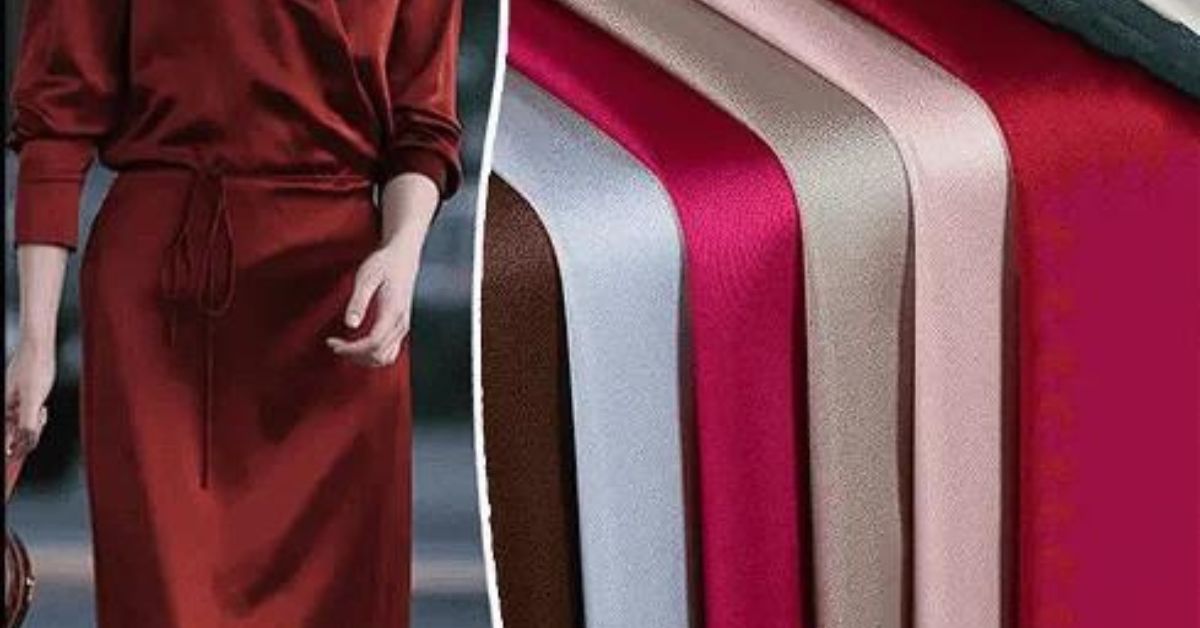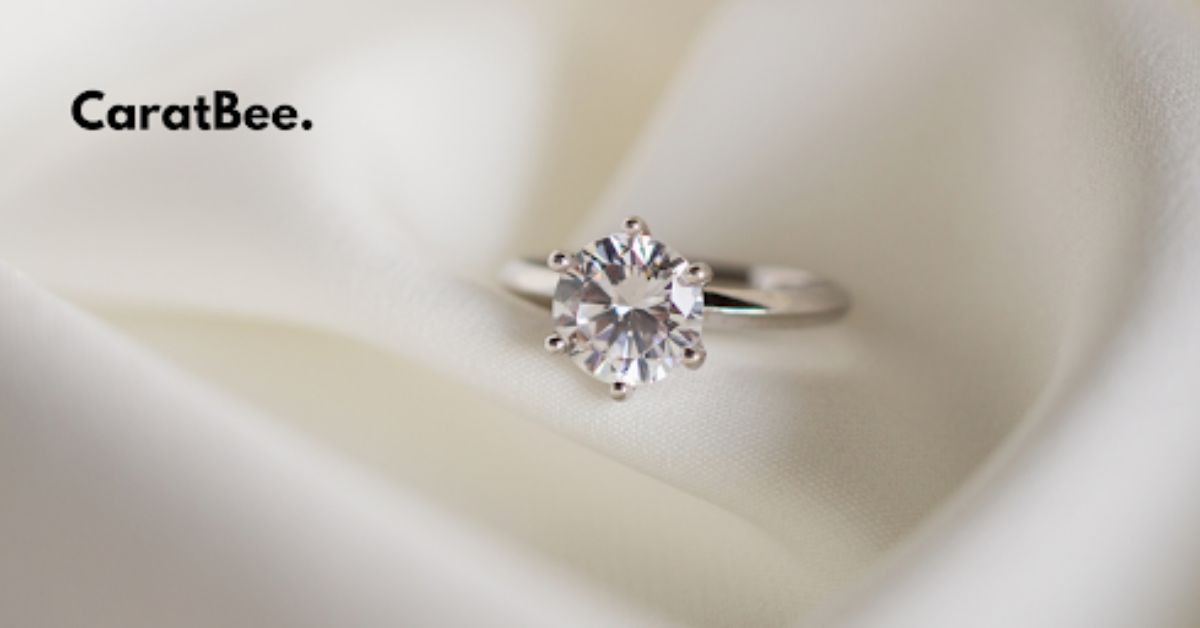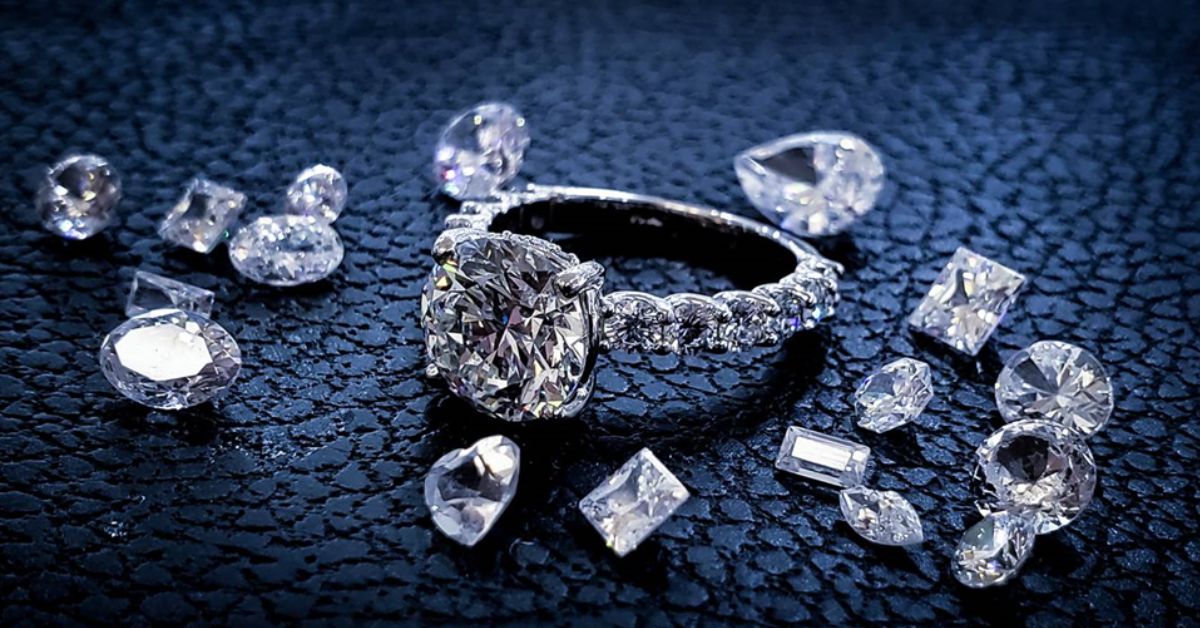FASHION
How Acetates Are Revolutionizing the Fashion Industry

Introduction to Acetates
Step into the world of fashion innovation where a versatile material is taking center stage – acetates. From runway designs to everyday accessories, acetates are revolutionizing the way we think about style and sustainability. Let’s dive deeper into the chemical compositions, applications across various industries, and the exciting future potential of this game-changing material. Join us on this journey as we explore how acetates are reshaping the fashion industry as we know it!
Chemical Composition and Significance
Acetates, derived from cellulose, are versatile compounds that have made a significant impact on the fashion industry. Their chemical composition consists of acetic acid and cellulose fibers, creating a material known for its durability and flexibility.
The significance of acetates lies in their ability to mimic the luxurious look of silk while being more affordable and easier to care for. This makes them a popular choice for clothing designers looking to combine elegance with practicality in their creations.
In addition to fashion, acetates are also used in various industries such as automotive interiors, eyewear frames, and even packaging materials. Their versatility and adaptability make them a go-to material for manufacturers seeking both style and functionality.
Understanding the chemical composition of acetates is crucial not only for production processes but also for ensuring that they meet quality standards and regulatory requirements. By harnessing the unique properties of acetates, industries can continue to innovate and stay ahead in an ever-evolving market landscape.
Applications in Various Industries
Acetates have found a diverse range of applications across various industries, showcasing their versatility and adaptability. In the fashion industry, acetate fabrics are prized for their luxurious feel and drape, making them a popular choice for high-end garments. Their ability to mimic the look of silk while being more affordable has made them a staple in many designer collections.
Beyond fashion, acetates are also widely used in the production of eyewear frames due to their lightweight yet durable nature. The material can be easily molded into intricate shapes, allowing for endless design possibilities in the eyewear sector. Acetate sheets are commonly utilized in graphic arts and printing processes as well, thanks to their excellent clarity and printability.
Moreover, acetates play a crucial role in the pharmaceutical industry by serving as an essential component in coating tablets to improve taste and swallowability. This application highlights the importance of acetates not only in aesthetics but also in enhancing functionality across different sectors.
Production and Industrial Processes
Acetates are produced through a fascinating industrial process that involves the transformation of natural resources into versatile materials used in various industries. The production of acetates typically starts with cellulose extracted from wood pulp or cotton fibers. This cellulose is then chemically treated to form cellulose acetate, which can be further processed into different forms like sheets, films, or fibers.
The industrial processes for producing acetates often involve methods such as esterification and plasticization to achieve the desired properties like strength, flexibility, and transparency. These processes require precision and expertise to ensure consistent quality across batches of acetate products.
Manufacturers may also incorporate additives or dyes during production to customize acetates for specific applications in fashion, eyewear, packaging, or medical devices. Quality control measures are crucial throughout the production process to meet industry standards and deliver reliable acetate products to consumers worldwide.
Innovations in production techniques continue to enhance the efficiency and sustainability of manufacturing acetates. From optimizing resource utilization to reducing waste generation, advancements in industrial processes play a vital role in shaping the future of this essential material.
Environmental Impact and Regulatory Considerations
As the fashion industry continues to evolve, so does the need for sustainable practices. Acetates, while versatile and stylish, also come with their own set of environmental considerations. The production of acetates involves chemical processes that can have a significant impact on the environment if not managed properly.
From wastewater discharge to air emissions, acetate manufacturing plants must adhere to strict regulatory standards to minimize their ecological footprint. Additionally, the sourcing of raw materials for acetates can also raise concerns about deforestation and biodiversity loss.
To combat these issues, many companies are now adopting more eco-friendly production methods and investing in renewable resources. By prioritizing sustainability in acetate production, the fashion industry can help reduce its overall environmental impact and contribute to a greener future for all.
As consumers become more conscious of the environmental implications of their clothing choices, it is crucial for brands to prioritize transparency and accountability in their supply chains.
Case Studies and Emerging Trends
In the realm of fashion, acetates have been making waves with their versatility and sustainability. Numerous case studies have highlighted how designers are embracing acetate fabrics for their luxurious feel and drape, resembling silk but at a more affordable price point.
Emerging trends show that more brands are turning to acetates not just for clothing but also for accessories like eyewear frames and handbag accents. This shift towards using acetate in various applications demonstrates its adaptability across different sectors within the fashion industry.
Furthermore, with consumers becoming increasingly conscious of environmental impact, acetates offer a greener alternative compared to traditional plastic materials. As sustainability continues to be a driving force in consumer choices, we can expect to see even more innovative uses of acetates in the future – from biodegradable packaging to eco-friendly homeware products.
The combination of style, functionality, and eco-friendliness positions acetates as a material poised to continue revolutionizing the fashion industry in exciting ways ahead.
Future of Acetates in Industry
As we look towards the future of acetates in the industry, exciting possibilities are on the horizon. With advancements in technology and sustainability efforts, acetates are set to play a crucial role in shaping the fashion landscape.
Designers are increasingly turning to acetates for their versatility and eco-friendly properties. From vibrant colors to unique textures, acetate materials offer endless creative opportunities for fashion enthusiasts.
Innovations in production techniques are making acetates more cost-effective and accessible than ever before. This accessibility is opening doors for emerging designers and established brands alike to experiment with this versatile material.
Moreover, as consumers become more conscious of sustainability issues, the demand for environmentally friendly materials like acetates is expected to rise. This shift towards eco-conscious fashion choices will further drive the adoption of acetate products in various industries.
The future of ace-tates in the industry looks promising as it continues to evolve and adapt to meet the demands of a rapidly changing market.
Conclusion
Acetates have indeed revolutionized the fashion industry and various other sectors with their versatility, sustainability, and aesthetic appeal. As we continue to witness advancements in production processes, environmental considerations, and innovative applications of acetates across industries, it is evident that these materials are here to stay.
With a rich history dating back decades and a promising future ahead, ace-tates are set to play a crucial role in shaping the landscape of fashion and beyond. As designers, manufacturers, and consumers increasingly prioritize sustainability and quality in their choices, acetates stand out as a sustainable option that offers both style and substance.
As we look towards the future of the fashion industry and other sectors where ace-tates are utilized, one thing is clear – these versatile materials will continue to inspire creativity, drive innovation, and lead the way towards a more sustainable future for all. Embracing ace-tates means embracing not just style but also responsibility towards our planet – making it a win-win choice for both businesses and consumers alike.
FASHION
A Closer Look at 3 Carat and 7 Carat Diamond Rings

When it comes to buying an engagement ring, one of the most exciting & daunting, decisions is choosing the perfect diamond. You’ve probably come across terms like “carat,” “cut,” “clarity,” and “color” in your search, but carat weight often takes center stage, as it directly affects how noticeable your diamond will be. If you’re considering a 3 carat diamond ring or a 7 Carat Diamond Ring, we’re here to guide you through everything you need to know!
This blog will cover what carat weight means, the size differences between 3 carat and 7 carat diamonds, and how to choose the right one for you. We’ll also explore popular ring settings and what to keep in mind before making your purchase.
Whether you’re finalizing a proposal ring or simply exploring options, you’re in the right place.
What is a Carat?
Carat is a unit of weight used to measure diamonds and other gemstones. One carat equals 200 milligrams or 0.2 grams. While it doesn’t directly measure the size of a diamond, carat weight heavily influences a diamond’s perceived size.
For example, some cuts, like emerald or marquise, appear larger due to their shape, even if they weigh the same as a round brilliant cut. It’s important to remember that carat is just one factor of many that contribute to your diamond’s brilliance and overall appearance.
Now, let’s get into the specifics of 3 carat and 7 carat diamonds.
How Large is a 3 Carat Diamond?
While carat weight relates to the diamond’s weight, its dimensions can differ depending on the cut. On average, a 3 carat diamond with a round brilliant cut is approximately 9.3 millimeters in diameter. To give you some perspective, that’s about the size of the eraser on a standard pencil.
However, the diamond’s shape can make it appear slightly larger or smaller, depending on how the weight is distributed in the cut. Oval, pear, or marquise shapes tend to look larger compared to round diamonds of the same carat weight thanks to their elongated silhouettes.
Overview of 3 Carat Diamond Rings
A 3 Carat Diamond Ring is a showstopper. This weight strikes a balance between size and wearability, making it a popular option for those who want their ring to make a statement but still feel comfortable wearing it daily.
Why Choose a 3 Carat Diamond Ring?
- Bold yet practical for everyday wear.
- A wider variety of settings and designs to choose from.
- More budget-friendly compared to larger carats.
Popular settings for a 3 carat diamond ring often include solitaire, halo, and three-stone designs, each enhancing the diamond’s brilliance in unique ways.
Just How Big is a 7 Carat Diamond?
Now, if you thought a 3 carat diamond was impressive, a 7 carat diamond is in another league entirely! A round brilliant 7 carat diamond typically has a diameter of about 12.2 millimeters. That’s roughly the size of a cherry or a dime!
A ring of this caliber is instantly eye-catching and demands attention wherever you go. It’s the epitome of luxury and ideal for those who want a truly dazzling piece.
Overview of 7 Carat Diamond Rings
A 7 carat diamond ring isn’t just a piece of jewelry, it’s a statement. With a diamond this size, you’ll find that the setting itself also plays a larger role in the overall design to give it proper support and security.
Why Choose a 7 Carat Diamond Ring?
- Unparalleled wow factor and glamour.
- Perfect for special occasions or collectors of fine jewelry.
- Represents luxury and exclusivity.
Settings for 7 carat diamond rings are often more elaborate, such as double halos or intricate vintage-inspired designs, ensuring the diamond remains stable and secure.
Choosing Between 3 Carat Diamond Rings Vs 7 Carat Diamond Rings
Not sure which size is right for you? Here are a few things to consider when deciding between a 3 carat diamond ring and a 7 carat diamond ring.
Lifestyle:
If you plan to wear your ring daily, a 3 carat diamond ring might be more practical. A 7 carat diamond, on the other hand, may feel heavier and is better suited to those who prefer a statement piece for special occasions.
Budget:
There’s no denying it, carat weight is one of the biggest determinants of a diamond’s price. A 7 carat diamond is exponentially more expensive than a 3 carat one, so assessing your budget is important before falling in love with the sparkle.
- Approximately Price Range is 3 carat diamond ring:
- Lab Grown Diamond – VVS2 : $2,600 – $3,200
- Moissanite Diamond – VVS1: $1,100 – $1,600
- Approximately Price Range is 7 carat diamond ring:
- Lab Grown Diamond – VVS2 : $5,500 – $8,000
- Moissanite Diamond – VVS1: $3,500 – $5,500
Personal Style:
Do you love subtle elegance or over-the-top glam? A 3 carat diamond is ideal for timeless classic looks, while the 7 carat variety is for those who want all eyes on them.
What Are the Best Settings for 3 Carat and 7 Carat Rings?
To showcase your diamond’s beauty, choosing the right setting is crucial.
Ideal Settings for 3 Carat Diamonds
- Solitaire: Keep it classic with a single, stunning diamond. A solitaire setting allows the diamond to shine without distractions.
- Halo: Surrounding a 3 carat diamond with a ring of smaller diamonds enhances its perceived size and brilliance.
- Three Stone: Two smaller diamonds on either side complement the central 3 carat diamond beautifully.
Ideal Settings for 7 Carat Diamonds
- Double Halo: Two layers of smaller diamonds amplify the already captivating sparkle of a 7 carat diamond.
- Vintage-Inspired: Intricate designs add to the timeless and luxurious appeal of such a large diamond.
- Security-Focused: Ensure the setting provides strong prongs or a bezel to keep your diamond safe and secure.
Things to Consider When Buying
Before making your purchase, here are a few practical tips to keep in mind.
- Certifications Matter: Ensure your diamond includes a grading report from a reputable organization like the GIA to guarantee its quality.
- Consider Cut, Clarity, and Color: These three factors play a significant role in the diamond’s overall beauty. Don’t prioritize carat weight at the expense of these other crucial elements.
- Shop Around: Explore dealers who specialize in high-quality or custom diamond rings, like CaratBee, to ensure you’re getting the best value.
Conclusion
Choosing between a 3 carat diamond ring or 7 carat diamond ring depends entirely on your lifestyle, preferences, and budget. Both options offer unparalleled beauty and bring unique benefits, whether the practicality and elegance of a 3 carat diamond or the jaw-dropping glamour of a 7 carat stone.
Whichever you select, focus on quality and craftsmanship to make your investment shine for years to come.
Looking for the perfect diamond ring? Browse CaratBee’s range of exquisite diamonds and find your dream piece today.
FASHION
Best Place to Buy Diamonds Online – A Complete Guide

In today’s digital world, buying a diamond online is easier than ever. Thanks to the convenience of shopping from your couch, you can browse through a huge selection of diamonds with just a few clicks. Among the many options out there, Shop at Rare Carat to experience the top choice for purchasing diamonds. As America’s go-to source for unbiased advice on diamond engagement rings, Rare Carat provides an outstanding experience for anyone on the hunt for high-quality diamonds at great prices.
So, what exactly is Rare Carat?
Rare Carat, LLC is a one-of-a-kind online platform that offers a full range of services for diamond buyers. Focusing on engagement rings and diamonds, it provides a smart way to compare over a million natural and lab-grown diamonds. The company partners with trusted retailers and gives clear insights into diamond quality, helping customers make well-informed choices. If you’re in the market for a diamond, Rare Carat makes sure you’re getting the best deal possible, whether it’s a dazzling round diamond for an engagement ring or a beautiful piece of jewelry for a special occasion.
One of the standout features of Rare Carat is its ability to compare diamonds from various retailers, making the shopping experience much smoother. This comparison tool helps customers find the best prices and discover diamonds that fit their unique preferences. Plus, Rare Carat’s gemologist checks on GIA-certified diamonds add an extra layer of reassurance, ensuring that every diamond meets the highest standards of quality.
The Perks of Shopping with Rare Carat
Competitive Pricing
When it comes to buying diamonds, one of the biggest worries for most shoppers is getting the best bang for their buck. Rare Carat tackles this issue head-on by offering competitive pricing. The platform’s ability to compare diamonds from a range of trusted retailers means customers can snag the best deals without sacrificing quality. Whether you’re after a natural diamond or a lab-grown one, Rare Carat’s comparison tool helps buyers find exactly what they’re looking for.
Exceptional Diamonds
Having high quality standards is at the core of what Rare Carat offers and it strives to guarantee that all diamonds being sold are of the best quality. The site only collaborates with well-known sellers who have GIA accredited diamonds. GIA is a leading authority in the diamond industry and their certification guarantees that the diamonds have met the cut, color, clarity, and carat weight criteria including other factors. This makes GIA diamonds some of the best in the market which many buyers look for.
Rare Carat sells diamonds that are ethically made in labs as well. These diamonds offer a much more environmental friendly and responsible option in comparison to buying natural diamonds. The process of these diamonds creation includes reproducing the natural processes within a controlled environment enabling for the lowest impact on nature, all while sustaining the qualities of a mined diamond.
Outstanding Client Care
Not only does Rare Carat maintain high standards of quality in their diamonds, but they also excel in customer service. The company has a variety of tools to assist purchasers with the often challenging task of buying a diamond. One of the highlights is the 4 Cs Diamond Buying Guide, which offers information on the most important characteristics of diamonds: cut, color, clarity, and carat weight along with other features. This guide explains to customers what high quality diamonds are and how to choose the perfect one for their needs.
Moreover, Rare Carat offers free gemologist checks on all GIA-certified diamonds. This service is invaluable for customers who want an expert opinion on the diamonds they are considering. Having a gemologist assess a diamond ensures that buyers are getting exactly what they pay for, providing peace of mind during the purchase process.
Patterns in the Diamond Market
While the diamond industry is constantly changing, there are some trends that affect how consumers purchase diamonds. Most prominent among them is the rapid acceptance of lab-grown diamonds. These diamonds have gained popularity for their ethical concern as well as their lower prices. The company Rare Carat is a leader in these types of diamonds and sells lab-grown diamonds to eco-friendly buyers.
Another trend is the increasing popularity of customized engagement diamond rings. Consumers want to purchase products with distinct designs that suit their individuality, and this is what custom made diamonds from Rare Carat are intended to do. From elaborate designs to classic solitaires, Rare Carat offers all shoppers the ability to customize their diamonds to their preferences.
Challenges and Opportunities
The diamond business on the internet has plenty of prospects, but it also has some problems. One of the major issues is the intricacy involved in choosing a diamond. Buyers may get overwhelmed with the myriad choices available and may lack the know-how concerning the details of diamond quality. But Rare Carat makes the selection easier by providing expert help in conjunction with tools such as a 4 Cs Diamond Buying Guides and gemologist checks, facilitating an easier diamond buying experience for everyone.
Conclusion
When it comes to buying diamonds online, Rare Carat truly shines as the top choice. They offer a fantastic mix of competitive prices, stunning diamonds, and outstanding customer service. With their commitment to transparency, expert guidance, and user-friendly tools, it’s no wonder they’re the go-to for anyone on the hunt for a diamond. Whether you’re after a natural gem or a lab-grown option, Rare Carat helps you make an informed choice while snagging the best deal. Their dedication to customer satisfaction and innovation really sets them apart, making Rare Carat the ultimate destination for diamond enthusiasts.
FASHION
What Do People Wear To SXSW?

If there’s one place where fashion, music, tech, and film collide in a perfect storm of cool, it’s SXSW. Every March, thousands of creatives, industry pros, and music lovers descend upon Austin, Texas, for a week of panels, showcases, and epic street style.
Unlike the hyper-curated aesthetics of Coachella or the grunge-meets-glam of Lollapalooza, SXSW fashion thrives in that sweet spot between effortlessly stylish and comfortable.
What do people wear to SXSW? The short answer: whatever makes them feel like the coolest version of themselves. The long answer? A carefully crafted blend of vintage, streetwear, and practical staples designed to handle long days, unpredictable Texas weather, and spontaneous adventures.
What Is SXSW’s Aesthetic?
If SXSW had an official dress code, it would read: “Look like you didn’t try too hard, but still turn heads.” It’s a festival where authenticity is the name of the game, and that extends to fashion.
There’s also an element of practicality. SXSW isn’t a festival where you’re parked in one spot all day — you’re bouncing between venues, chasing secret shows, and walking a lot. This means your outfit has to strike the perfect balance between stylish and functional.
More than anything, SXSW fashion is about self-expression. It’s a chance to showcase your personality, whether that’s through a perfectly broken-in leather jacket, a pair of funky sunglasses, or a signature accessory that makes your outfit pop.
What Are Must-Have SXSW Staples?
Dressing for SXSW is all about finding that perfect mix of style and function, and a few key pieces dominate the scene year after year.
One of the biggest staples you’ll see at SXSW is vintage graphic tees. Whether it’s an old-school band shirt, a faded ‘90s movie print, or a thrifted relic from a forgotten tourist attraction, a well-worn tee is a go-to for festival-goers. It’s the kind of piece that looks effortlessly cool, feels incredibly comfortable, and pairs with just about anything — denim cutoffs, high-waisted jeans, or layered under a leather jacket.
Speaking of festival must-haves, denim is everywhere. From distressed shorts to vintage Levi’s to oversized trucker jackets, SXSW fashion thrives on its ability to make casual look intentional. The more lived-in, the better.
Shoes are another integral part of SXSW style, and comfort is non-negotiable. With so much walking involved, flimsy sandals just won’t cut it. Sneakers dominate the scene, particularly classic white kicks or retro high-tops, but boots are just as popular, especially for those looking to add a little edge to their look.
Finally, layering is key for dealing with Texas’ unpredictable spring weather. Early mornings can be chilly, afternoons get hot fast, and nights often bring a cool breeze, so having a lightweight jacket, an oversized button-up, or a cropped hoodie on hand is essential. These pieces help create that effortless, layered look that defines SXSW style.
How Can You Stand Out?
While SXSW fashion is rooted in casual cool, it’s also the perfect place to make a statement. Accessories and bold styling choices help festival-goers stand out in a sea of denim and sneakers, proving that even a laid-back outfit can have a little extra edge.
Funky sunglasses are everywhere — think oversized ‘70s frames, retro aviators, or colorful tinted lenses that make the simplest outfit feel intentional. Hats are another favorite, from classic wide-brim fedoras to vintage trucker caps that add just the right amount of indie-rock energy.
Sustainability is also a huge part of SXSW style, with more people opting for thrifted, upcycled, and small-batch indie designer pieces. This means outfits often feature one-of-a-kind items, whether it’s a reworked band tee, a hand-painted leather jacket, or patchwork denim.
SXSW is the type of place where a mix of high and low fashion thrives, like designer sneakers paired with a vintage tee or an expensive bag worn with thrift-store jeans. The beauty of SXSW style is that it doesn’t feel overly curated or forced. Instead, it’s all about looking effortlessly unique, as if you just happened to throw on the coolest pieces in your wardrobe before heading out the door.
The Key to SXSW Style
The best SXSW outfits aren’t about following trends — they’re about embracing individuality. The festival’s unique mix of music, film, and tech creates an environment where personal style is celebrated, and there’s no single way to dress for it. Comfort is key, but creativity rules and the best looks strike a balance between effortless and expressive.
Layer smart, choose shoes that can handle a full day of walking, and throw in a few statement pieces that feel true to you. From a vintage tee to a bold accessory to a killer jacket, SXSW fashion is all about making it your own. Have fun!

 Cartoon1 year ago
Cartoon1 year agoUnlocking the Potential of Nekopoi.care: A Comprehensive Guide

 Game1 year ago
Game1 year agoExploring Aopickleballthietke.com: Your Ultimate Pickleball Destination

 BUSINESS1 year ago
BUSINESS1 year agoWhat Companies Are In The Consumer Services Field

 BUSINESS11 months ago
BUSINESS11 months agoUnraveling the Mystery of 405 Howard Street San Francisco charge on Credit Card

 HOME IMPROVEMENT1 year ago
HOME IMPROVEMENT1 year agoVtrahe vs. Other Platforms: Which One Reigns Supreme?

 TECHNOLOGY12 months ago
TECHNOLOGY12 months agoThe Guide to Using Anon Vault for Secure Data Storage

 ENTERTAINMENT8 months ago
ENTERTAINMENT8 months agoUnderstanding Bunkr Album: A Comprehensive Guide

 ENTERTAINMENT1 year ago
ENTERTAINMENT1 year agoThe Epic Return: Revenge of the Iron-Blooded Sword Hound
















